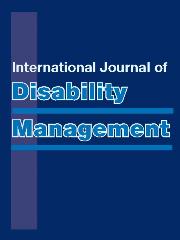Article contents
A Report on the Return-to-Work Rates Following Compensatable Accident or Injury
Published online by Cambridge University Press: 23 February 2012
Abstract
This study examined return-to-work in a sample of 468 compensatable injury cases. These included amputees, brain damage, hearing loss, mental disorders, musculoskeletal problems, nervous system, paraplegia, sight loss and miscellaneous conditions. Around 35% returned to work. It was substantially higher for work-related injuries compared to motor vehicle accidents or general insurance claims. Those who underwent surgery or were admitted to hospital had higher return-to-work rates than those never attending hospital. Psychiatric adjustment factors were a major influence on low rates of return-to-work. Other social and demographic factors were considered (gender, age, city vs. rural location, whether a spinal injury was involved, family status, years of schooling, qualifications, job status at time of accident, occupation). Eight out of 17 possible factors were more statistically significantly related than the remainder to whether someone was working but the substantive limitations of even relevant pre- or post-accident indicators are outlined.
- Type
- Articles
- Information
- International Journal of Disability Management , Volume 3 , Issue 2 , 01 September 2008 , pp. 54 - 60
- Copyright
- Copyright © Cambridge University Press 2008
- 3
- Cited by




